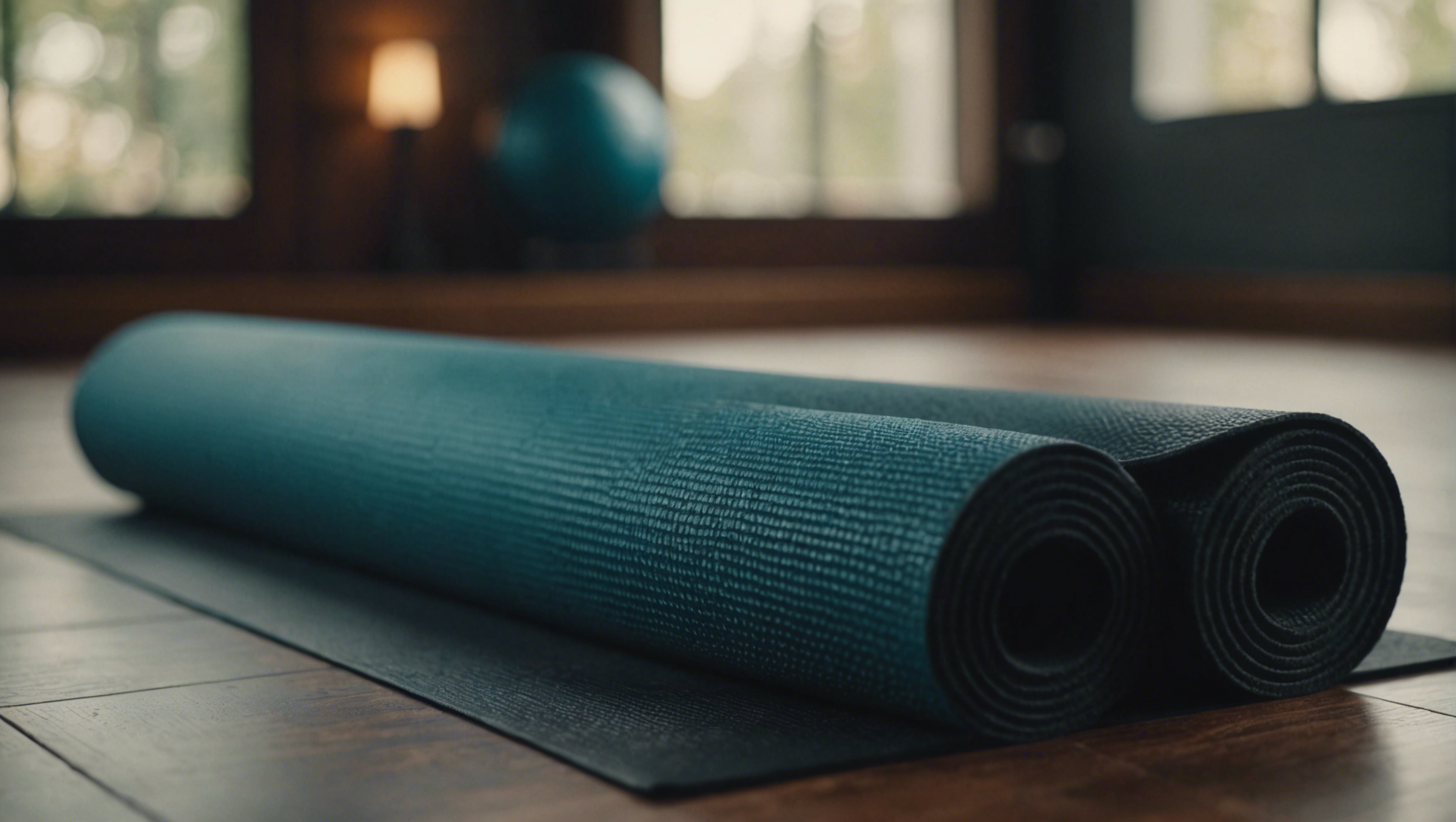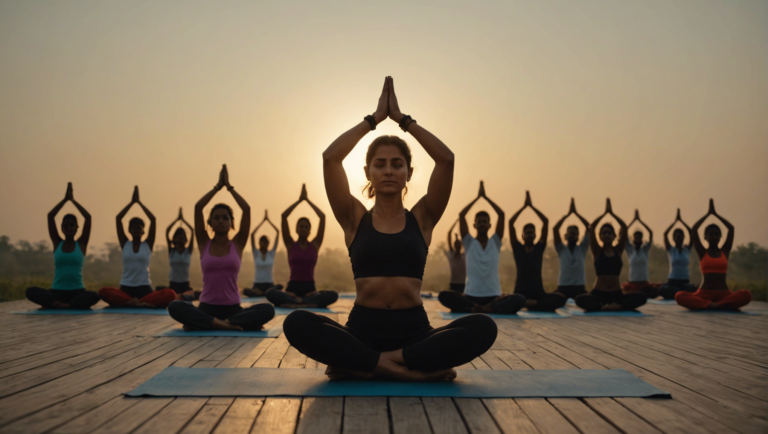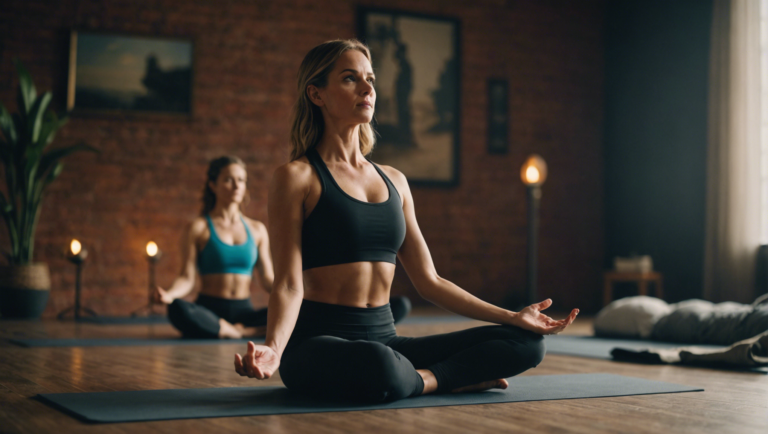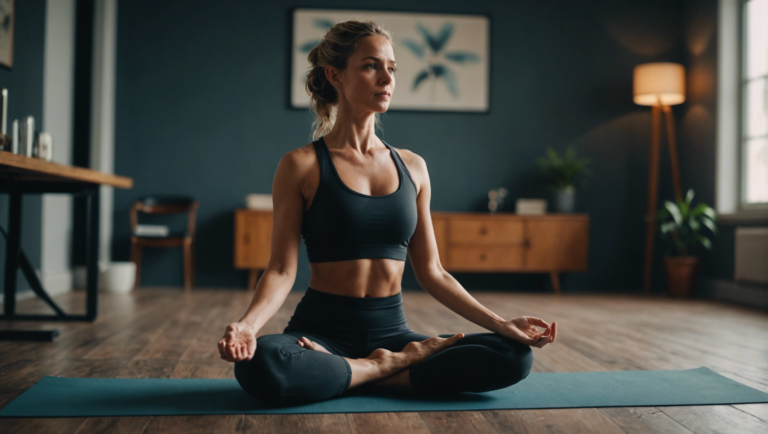Discovering The Best Yoga Mat For Your Practice
Discovering the Best Yoga Mat for Your Practice: Navigating Materials and Sustainability
With an ever-growing awareness of our environmental footprint and the desire for a personalized yoga practice, the quest for the perfect yoga mat has become more complex and nuanced. Yoga enthusiasts are no longer just looking for a mat that provides grip and comfort; they are also considering the materials used and the sustainability of their purchase. This article delves into the factors that define the best yoga mats for your practice, focusing on the intertwining aspects of materials used and their sustainability.
Navigating Materials for Optimal Performance
The material of a yoga mat significantly influences its performance, including its grip, durability, and cushioning. Traditionally, PVC has been a popular choice due to its durability and stickiness. However, environmental and health concerns have driven the search for alternative materials.
Natural Rubber: A Sustainable Choice
Natural rubber mats offer excellent grip and cushioning and are a more eco-friendly option than PVC. These mats are derived from the sap of rubber trees and are biodegradable. The open-cell structure provides a fantastic grip, even in sweaty conditions, making them an ideal choice for dynamic styles of yoga. However, individuals with latex allergies should be cautious.
TPE and Eco-Foams: The Middle Ground
Thermoplastic elastomers (TPE) are synthetic rubbers that provide a middle ground between natural and synthetic materials. TPE mats are lightweight, offer good cushioning, and are less harmful to the environment than PVC. Eco-foams, made from a blend of natural and synthetic materials, also provide an eco-conscious choice without compromising on performance.
Cork: Nature’s Antimicrobial
Cork yoga mats are gaining popularity for their natural, renewable qualities and antimicrobial properties. The surface of cork mats becomes grippier as it gets wet, making them an excellent option for hot yoga practitioners. Moreover, cork harvesting is sustainable, as it doesn’t require the tree to be cut down.
Sustainability: More Than Just a Material Choice
Selecting a yoga mat made from sustainable materials is a significant first step, but sustainability encompasses more than just the material. The production process, the lifespan of the mat, and the end-of-life options are crucial elements to consider.
Ethical Production Practices
Look for brands that are transparent about their production practices. Ethical labor practices and minimal environmental impact during manufacturing are vital indicators of a brand’s commitment to sustainability. Certifications such as OEKO-TEX, GOTS (for organic materials), and Fair Trade can guide you towards making an informed choice.
Durability Equals Sustainability
A durable yoga mat may seem like a significant investment initially, but a mat that withstands years of practice is more sustainable than frequently replacing a cheaper, lower-quality mat. Durability not only extends the life of your mat but also reduces waste.
End-of-Life Solutions
Consider the afterlife of your mat. Some companies offer recycling programs for their mats or design them to be biodegradable or compostable. Choosing a mat with a clear, environmentally responsible end-of-life path contributes to a more sustainable practice.
Finding Your Match
Selecting the right yoga mat is a deeply personal decision that extends beyond simple preferences. Understanding how your choices impact your practice and the planet is paramount. Consider the types of yoga you practice, your body’s needs, and your personal ethos towards sustainability. Testing different materials can also help determine what feels right, offering insight into how different materials respond to movement and moisture.
Engaging in this mindful selection process not only enhances your yoga practice but also aligns it with your values. By choosing a mat that respects both your practice and the planet, you contribute to a more sustainable world—one yoga mat at a time.
The Evolution of Yoga Mats: From Simple Beginnings to High-Tech Compositions
The journey of yoga mats is a fascinating story of evolution, from their humble origins to modern-day technological marvels. What was once a simple accessory has now become a critical tool in the practice of yoga, reflecting both the tradition’s spiritual depth and the advancements in material science. This transformation not only tells us about the changing face of yoga through the centuries but also about the practitioners’ evolving needs and the industry’s response to these demands.
The Roots: Traditional Yoga Practice and the First Mats
The practice of yoga dates back thousands of years, with its origins deeply rooted in ancient India. Initially, yoga was practiced on kusha grass, deer or tiger skins, which were believed to provide insulation against the damp or cold earth, thereby aiding in the conservation of energy. These natural materials were the first ‘mats’ used, signifying a connection with nature and the spiritual world.
Transitioning from these natural surfaces, the use of rugs or cotton mats came into practice. These provided a more comfortable and practicable surface for asanas, marking a shift towards personalizing the yoga experience. The idea was to create a space that was both sacred and conducive to focusing the mind.
Modern Times: The Advent of the Rubber Yoga Mat
Fast forward to the 20th century, a significant leap in the evolution of yoga mats came with the introduction of rubber mats. Angela Farmer is credited with using carpet underlay cut to mat size in the 1980s as a means to prevent slipping, heralding a new era of yoga mats designed for grip and stability. This invention paved the way for the development of the PVC (Polyvinyl Chloride) yoga mat by Hugger Mugger Yoga Products in the early 1990s.
These rubber and PVC mats represented a monumental shift towards the commercialization and global acceptance of yoga. They catered to the practitioner’s need for a non-slip surface, durability, and some degree of cushioning. Needless to say, this innovation was met with great enthusiasm, marking the beginning of the yoga mat industry as we know it today.
The Age of Innovation: Eco-Friendly and High-Tech Materials
As yoga’s popularity soared, so did the scrutiny of yoga mats’ environmental impact. The new millennium saw the rise of eco-consciousness among yogis, leading to the demand for mats made from sustainable, non-toxic materials. Manufacturers responded by introducing mats made from natural rubber, jute, cork, and organic cotton, providing alternatives that were both earth-friendly and biodegradable.
Simultaneously, the era of technology introduced yoga mats with advanced features designed to enhance the practice. These include mats with alignment markers, improved grip technology, and even smart mats that sync with devices to monitor and guide postures. Such innovations have made yoga more accessible and customized, catering to the needs of beginners and advanced practitioners alike.
The Personalization of Practice: Custom Yoga Mats
Today, the yoga mat has transcended its function as a mere practice surface; it has become a personal statement. Customized mats with varied designs, colors, and patterns allow yogis to express their personality and philosophies. Moreover, the thickness, texture, and material of the mat can be tailored to suit individual preferences, making yoga a truly personal journey.
This evolution reflects not just advancements in material science but also a deeper understanding of yoga’s holistic nature. It underscores the principle that yoga is not just about physical postures; it’s a pathway to self-realization and a deeper connection with the universe.
Future Trends: The Path Ahead for Yoga Mats
As we look to the future, it’s clear that the evolution of yoga mats is far from over. Emerging trends suggest a continued focus on sustainable materials and innovative designs that cater to a wide range of practices. The integration of technology is poised to further redefine what a yoga mat can offer, making the practice even more immersive and personalized.
Through all these changes, one thing remains constant: the essence of yoga as a bridge between the physical and the spiritual. The yoga mat, in all its forms, is a companion on this journey, evolving to meet the changing landscapes of time, technology, and personal enlightenment.
Customizing Your Yoga Mat Choice: Thickness, Texture, and Personal Comfort
Embarking on a yoga journey introduces a myriad of choices, not least of which is the selection of a yoga mat. This choice is not merely aesthetic; it influences your practice’s comfort, safety, and effectiveness. When it comes to customizing your yoga mat to suit your unique needs, there are three critical factors to consider: thickness, texture, and personal comfort. These elements play pivotal roles in ensuring your yoga practice is as beneficial and enjoyable as possible.
The Importance of Thickness
A yoga mat’s thickness is not just about cushioning; it’s about balancing comfort and stability. A thicker mat, generally around ¼ inch, offers enhanced cushioning, which is ideal for therapeutic practices, Yin yoga, or anyone with joint sensitivities. This added padding can provide much-needed relief and support during seated or supine positions.
Conversely, a thinner mat, typically around 1/8 inch, offers a firmer surface. It’s favored for practices that demand more balance and stability, like Vinyasa or standing poses. The reduced distance between you and the floor enhances your connection to the ground, facilitating improved posture and technique.
Exploring Texture for Grip and Comfort
Texture directly affects your mat’s grip and how it feels under your hands and feet. A mat with too smooth a texture may lead to slipping, especially in more dynamic or sweaty practices. On the other hand, a mat with a pronounced texture provides better grip, reducing the risk of slipping and potential injuries.
Natural materials, such as rubber or jute, naturally offer more texture and, consequently, better grip. However, these materials may not appeal to everyone, as they can feel rougher underfoot. For those seeking a compromise, synthetic materials have evolved tremendously, with many PVC mats now featuring patterns or treatments to enhance grip without compromising comfort.
Assessing Personal Comfort
Beyond thickness and texture, personal comfort with a yoga mat encompasses a broader spectrum of preferences, including material, environmental impact, and even design. Each yogi’s sensitivity varies, necessitating a choice that caters to their unique comfort levels both physically and ethically.
For individuals with allergies or sensitivities to synthetic materials, eco-friendly mats made from natural rubber, cork, or organic cotton may be more suitable. These materials not only ensure a healthier practice surface but also align with a more environmentally conscious lifestyle.
Moreover, the design and color of a mat can impact your mood and motivation. A design that resonates with you can enhance your focus, meditation, and overall enjoyment of your practice. While seemingly superficial, the aesthetic appeal of your yoga mat can play a subtle yet significant role in nurturing a deeper, more fulfilling practice.
Finding Your Perfect Match
Selecting the ideal yoga mat is a personal journey that goes beyond mere functionality. It’s about finding a mat that resonates with your practice style, ethical values, and aesthetic preferences. Sampling different materials, thicknesses, and textures can offer invaluable insights into what suits your practice best.
Engaging with the yoga community, either in person or online, to share experiences and recommendations can also guide your decision. Many yoga studios offer rental mats; experimenting with these can provide a firsthand sense of what works for you before making a commitment.
Remember, the perfect yoga mat for you is one that not only supports your physical practice but also aligns with your values and enhances your overall yoga experience. It’s a partner in your journey towards wellness, making the effort to select it wisely well worth it.
In essence, customizing your yoga mat choice involves a blend of understanding the technical aspects, like thickness and texture, and tuning into your personal preferences and comforts. This holistic approach ensures that your yoga mat becomes a foundational pillar of your practice, offering support, stability, and a touch of personal expression on the path to inner peace and physical well-being.
The Interplay Between Yoga Mat Selection and Practice Styles
Navigating the World of Yoga Mats
Selecting the Perfect Yoga Mat for Your Practice Style
The journey to finding the best yoga mat for your practice is deeply personal and significantly affects your yoga experience. The mat you choose is not just a cushion against the hard floor; it’s your space for growth, reflection, and introspection. The type of yoga you practice plays a crucial role in determining the features you should look for in a mat, from thickness and material to texture and sustainability.
Understanding the Influence of Yoga Styles on Mat Selection
Different yoga styles require different types of support and traction. For instance, if your practice leans more towards dynamic forms such as Vinyasa, Ashtanga, or power yoga, you’ll need a mat with excellent grip to accommodate movement without slipping. These practices generate a lot of heat and sweat, making it essential to choose a mat with moisture-wicking properties.
Conversely, if you’re drawn to gentler, slower-paced styles like Hatha or Yin Yoga, comfort might be your priority. A thicker mat can provide the cushioning needed for prolonged periods of seated or lying poses, supporting your joints and enabling deeper relaxation and meditation.
The Role of Material and Texture in Your Yoga Practice
When it comes to yoga mats, the material matters. PVC mats are durable and offer a high level of stickiness, which is great for stability, but they’re not the most eco-friendly option. Natural rubber, cork, and jute mats offer a sustainable alternative with excellent traction and are often preferred by those committed to an eco-conscious lifestyle. However, it’s important to consider potential allergies, particularly to latex, which is found in natural rubber.
The texture of your mat can also affect your practice. A smoother mat might be more comfortable for flowing movements, while a textured surface provides extra grip for standing and balance poses.
Weighing the Importance of Thickness and Durability
The thickness of your yoga mat can greatly influence your comfort level during practice. Standard mats are typically around 1/8 inch (3 mm) thick, providing a solid connection to the ground which is essential for stability in standing poses. Thicker mats, around 1/4 inch (6 mm), offer more cushioning and are ideal for those with sensitive joints or who enjoy additional support during restorative practices.
However, thicker mats can be heavier and less portable. They might also feel less stable for yoga practices that require a strong foundation and balance. Durability is another consideration; investing in a high-quality mat that withstands the test of time not only benefits your practice but also reduces waste and supports sustainability.
Considering Portability and Ease of Cleaning
For yogis on the go, portability becomes a deciding factor. Lightweight mats or those that come with a carrying strap make transportation to and from the yoga studio or outdoor locations hassle-free. If you travel frequently, you might also consider a travel-friendly mat, which is typically thinner and can be easily folded to fit in luggage.
Ease of cleaning is yet another crucial element, especially for mats used in hot yoga or other high-intensity practices that lead to sweating. Look for mats that are easy to wipe down and clean, with materials that do not absorb odors.
Final Thoughts on Selecting the Ideal Yoga Mat
The quest for the perfect yoga mat is a blend of practical considerations and personal preferences. Reflecting on your practice style, values (such as sustainability), and physical needs will guide you to a mat that not only supports your yoga journey but also fosters a deeper connection to each pose and breath. Remember, the best yoga mat for you is one that aligns with your practice, lifestyle, and aspirations on and off the mat.
Caring for Your Yoga Mat: Tips for Longevity and Hygiene
Your yoga mat is more than just a piece of exercise equipment; it’s a sanctuary for your practice, a place where you engage in deep stretches, challenging poses, and moments of meditation. Therefore, taking proper care of your yoga mat not only extends its lifespan but also ensures your practice remains hygienic and enjoyable. With that in mind, here are indispensable tips to help you maintain your yoga mat in pristine condition.
Regular Cleaning Is Key
One of the cornerstone practices for yoga mat care is regular cleaning. Depending on the frequency of your practice, a weekly cleaning session can prevent the buildup of dirt, oil, and sweat that not only degrades the material of your mat but can also turn it into a breeding ground for bacteria.
Create Your Own Cleaning Solution: A simple DIY cleaning solution can be made by mixing water with white vinegar or gentle soap. The acidity of the vinegar acts as a natural disinfectant without harming the mat’s material. For those with sensitive skin or olfactory sensitivities, a mild, organic soap is a good alternative. Spray your mat lightly with the solution, then use a soft cloth to wipe it down thoroughly.
Avoid Harsh Chemicals: While the intention might be to get a thorough clean, harsh chemicals can break down the materials of your mat over time, leading to deterioration and a shorter lifespan. Stick to natural or mat-specific cleaners.
Deep Clean Periodically
In addition to your regular cleanings, a deeper cleanse every few months is essential, especially if your practice involves a lot of sweating or if you practice outdoors.
Submerge and Soak: For a deep clean, fill your bathtub with lukewarm water and add a small amount of your cleaning solution. Let your mat soak for about 20 to 30 minutes, then gently scrub with a soft cloth to remove any deeply embedded dirt or oils.
Rinse Thoroughly: After scrubbing, it’s crucial to rinse your mat well to remove any soap residue, which can become slippery and dangerous during your practice. Rinse it under clean, running water or in a fresh bath of water, ensuring all soap is washed off.
Immediate After-Practice Care
The moments right after your practice are crucial for maintaining your mat’s hygiene.
Wipe Down Post-Practice: Even if you don’t do a full clean, a quick wipe-down with a soft cloth or towel can remove surface sweat and oils until your next cleaning session. Some practitioners keep a dedicated small towel or cloth for this purpose in their yoga bag.
Allow to Air Dry: After cleaning or a post-practice wipe-down, let your mat air dry completely before rolling it up. Rolling up a damp mat can encourage the growth of mold or mildew, which not only smells bad but can also cause health issues.
Store Properly
How you store your yoga mat when it’s not in use is just as important as how you clean it.
Avoid Direct Sunlight: While sunlight is great for air-drying your mat after a clean, prolonged exposure can fade and degrade the material of your mat, reducing its stickiness and flexibility. Store your mat in a cool, dry place out of direct sunlight.
Roll, Don’t Fold: Folding your mat can cause creases and weaken its structure over time. Rolling it is the preferred method, and if possible, storing it in a yoga mat bag will protect it from dust and make it easy to transport.
By following these care tips, your yoga mat can continue to be a clean, safe, and comfortable space for your practice for years to come. Regular maintenance not only prolongs the life of your mat but also enhances your personal hygiene and health, making each session on the mat as rewarding and effective as the first.
Conclusion
Embarking on the journey to find the perfect yoga mat for one’s practice is a deeply personal and essential step in honoring the commitment to wellness and yogic discipline. This exploration starts with understanding the roots and advancements in yoga mat technology, from their humble beginnings to the innovative materials used today. Engaging with the materials and sustainability aspects of yoga mats not only supports personal health and safety but also reflects a dedication to environmental stewardship, a principle that aligns with the core tenets of yoga itself.
As yoga practitioners navigate through the array of options available, it becomes evident that the evolution of yoga mats mirrors the evolution of yoga practice globally. This journey from simple mats to sophisticated, high-tech designs speaks volumes about the growing understanding of human anatomy, ergonomics, and the need for supporting diverse yoga practices. These advancements have not only made yoga more accessible but have also enhanced the practice by providing the support and comfort needed for both novices and seasoned yogis.
Customizing one’s yoga mat choice by considering thickness, texture, and personal comfort is a testament to the understanding that yoga is not a one-size-fits-all practice. This recognition of individual needs and preferences underscores the importance of acknowledging and respecting the body’s signals during yoga practice. The act of selecting a mat that aligns with personal needs is a form of self-care and acknowledgment of one’s unique journey in yoga.
Moreover, the interplay between yoga mat selection and practice styles cannot be overstated. Whether one gravitates toward the dynamic flows of Vinyasa or the stillness of Hatha, the choice of mat can significantly enhance the practice. This symbiotic relationship between mat and practice style deepens the connection to yoga, facilitating a deeper exploration of its physical and spiritual dimensions. It’s a dialogue between the practitioner and the practice, mediated by the mat, which supports and guides the journey inward.
Caring for the yoga mat extends beyond mere maintenance; it is a ritual that mirrors the care and attention one brings to the yoga practice itself. The cleanliness and longevity of the mat reflect the dedication to the practice, underscoring the discipline and respect that yoga demands. Tips for maintaining the mat not only ensure its durability but also contribute to a hygienic practice environment, ultimately enhancing the overall yoga experience.
In navigating the path to discovering the best yoga mat, practitioners are invited to delve deep into the nuances of their practice, reflecting on their needs, aspirations, and the values that underpin their yogic journey. This process of selection is not merely about acquiring a piece of equipment but about making a choice that resonates with the individual’s path in yoga. It’s about finding a companion for the journey—a mat that supports, challenges, and grows with the practitioner.
Throughout this exploration, the guiding principles of mindfulness, sustainability, and personalization emerge as beacons for making a choice that not only enhances the physical practice of yoga but also enriches the spiritual experience. By considering these dimensions, yogis can select a mat that is not just an accessory but a foundational element of their practice, a reflection of their journey and a testament to their commitment to the path of yoga.
Therefore, the quest for the perfect yoga mat transcends mere practicality; it becomes an integral part of the yogic practice, reflecting the practitioner’s values, supporting their physical endeavors, and journeying with them on the path to self-discovery and enlightenment. In this light, the yoga mat is more than a tool; it is a sacred space, a teacher, and a companion on the deeply personal, ever-evolving journey of yoga.




